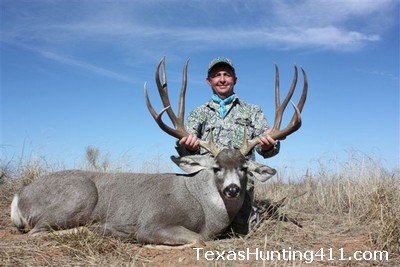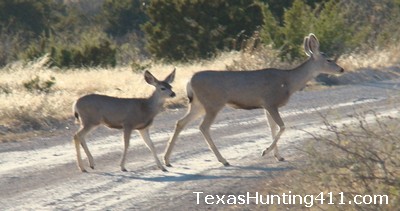Most of the deer hunting in Texas is focused on white-tail deer, but there is also a lot of mule deer hunting takes place in West Texas. The Trans-Pecos and the High Plans both offer solid opportunities for hunters to bag some really nice animals. But don’t get mule deer and whitetail deer confused. They are totally different animals, from the habitat that they used to the foods that they eat. Mule deer were taken from a completely different mold.
Desert mule deer have very different diet requirements. They are definitely deer, but their nutritional need is different than whitetail, which prefer habitats that provide much more cover. Mule deer have adapted to the desert and their food habits have evolved around it. Their are able to use low quality foods and also have the ability to recombine amino acids to create the protein they need. This allows them to make more with less.

Mule deer typically shed and start their antler growth about a month later than South Texas whitetail. Mule deer live in a hot, dry and tough area, so the number of mule deer is much lower than typical whitetail densities. The low density of the deer helps them though, because this desert habitat can provide them with enough food, even during tough times. The plants that live in the tough country of the Texas Trans-Pecos do so for a reason—they can make it there. Though these plants provide mule deer with an abundance of grub in times of rains, they tend to do okay when it is dry too. Mule deer can make it, but rain puts gravy on the bread.
Mule deer have adapted to the arid West Texas climate, but the quality of deer hunting is impacted by rainfall. This is because body condition and antler growth are closely tied to precipitation. Good rainfall makes for a lot of food, both forbs and browse. Plants wait on the rainy season and then put their new growth, which mule deer take advantage of. In drier times, however, the plants go dormant and deer eat more browse. Forbs will grow anytime it rains out there.
For the most part, the majority of the forbs found in the Trans-Pecos portion of West Texas will be warm season plants. There is not much cool season out there, so not many cool season plants except for irrigated winter food plots (if you are lucky enough to have them). When it rains things grow, and it does not take a mule deer very long to pack the weight back on if surrounded by a bounty of food. Over the mule deer’s range, winter months are the toughest because many areas will grow very little native forbs even if it does rain.

Mule deer will eat live plants as well as dead. In a good rainfall year, plants will produce more than mule deer can eat before they turn brown because of decreasing rainfall and increasing temperatures. When green forbs and some browse plants die, then these plants fill a role very similar to hay for livestock—mule deer can use this dead material as a large portion of their diet. In addition, mulies can compliment this forage with the surviving, deeper rooted forbs and browse.
Mule deer are tough and much different from whitetail. Mule deer hunting in West Texas is affected by precipitation in the region, but mule deer are quite drought tolerant. Dry winters are the norm in far West Texas and mule deer have adapted to it. The deer management practices on individual properties will also have impacts on local deer populations. Mature deer require less forage than younger, growing deer. Maintaining good age structure in both the buck and doe segments of the population will ensure healthy animals and mule deer hunting into the future.